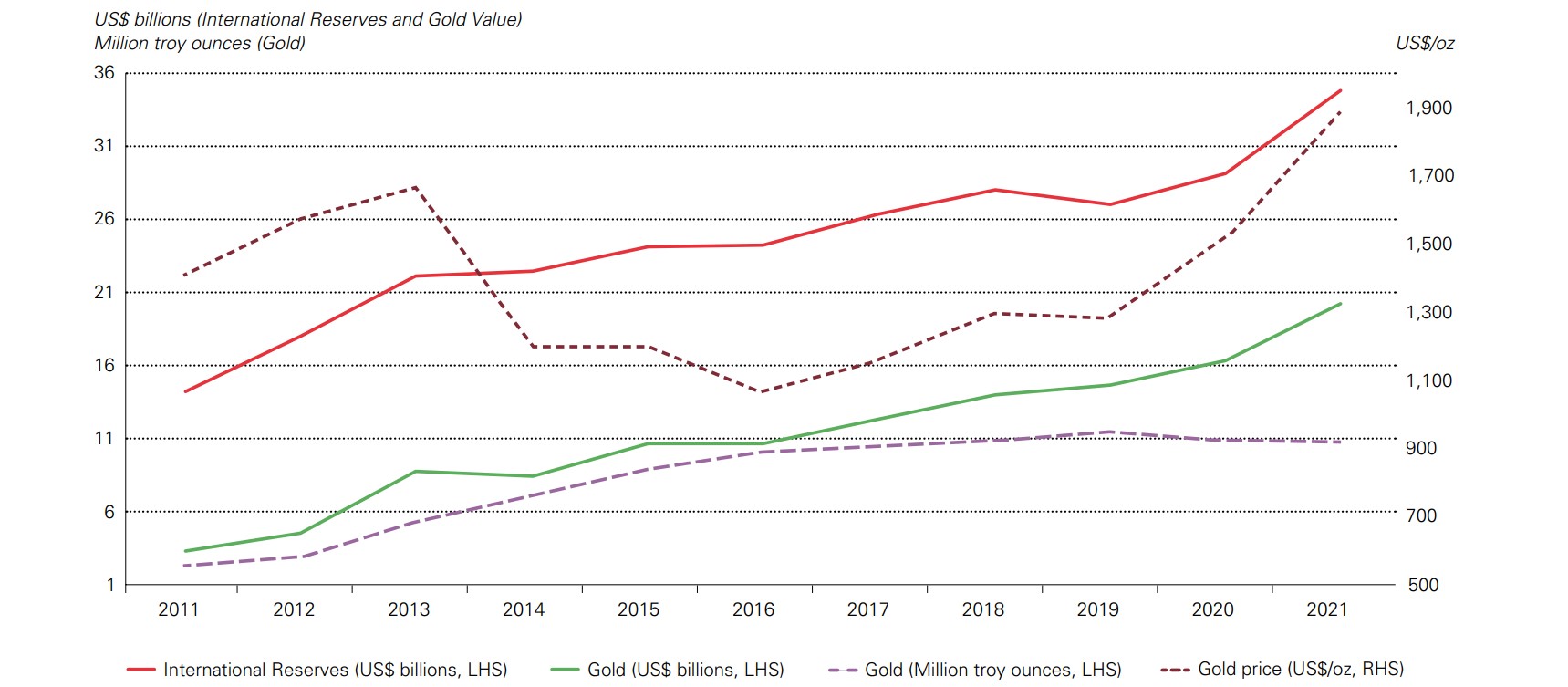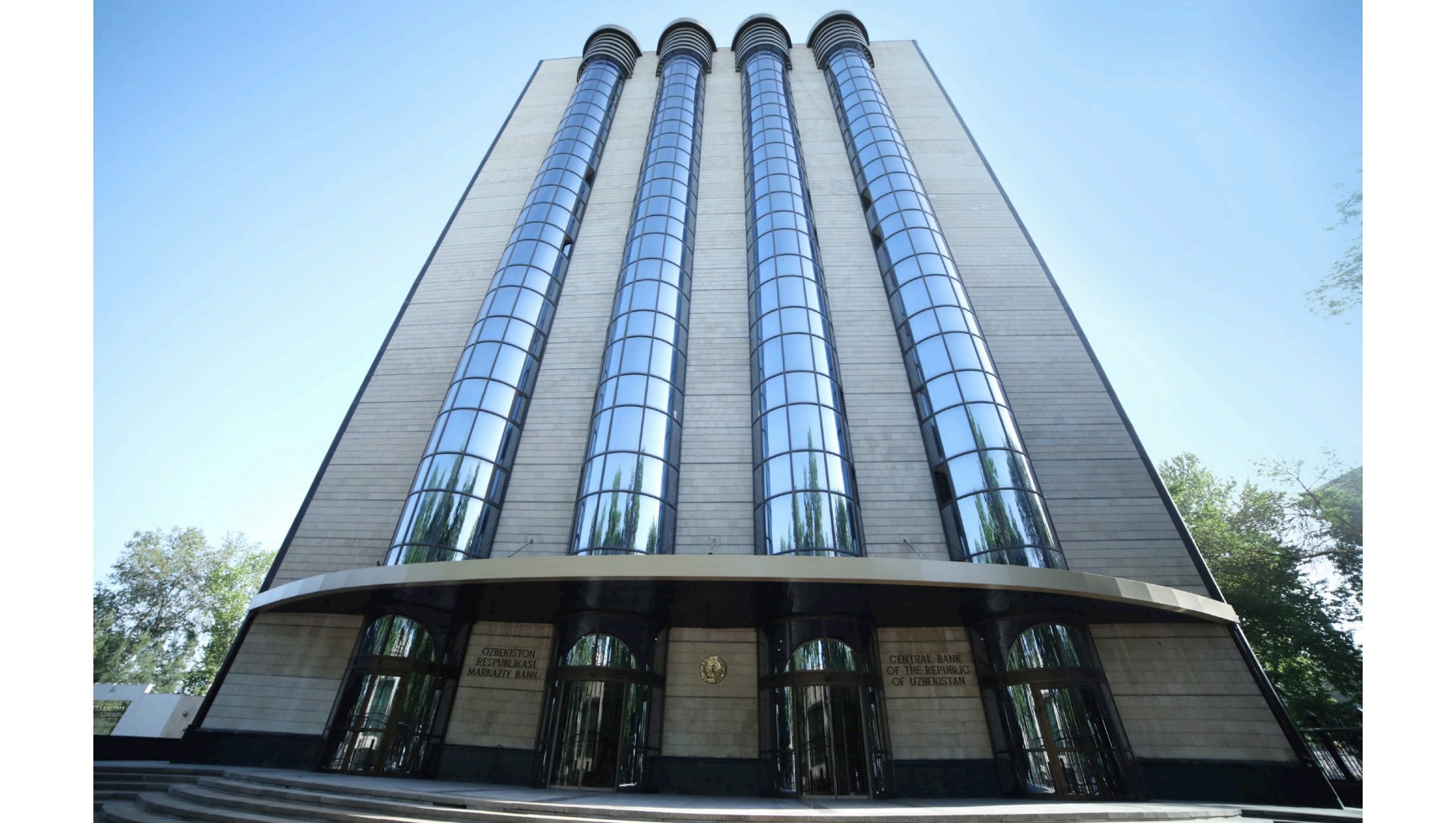A Central Banker's Perspective: the role of gold in Uzbekistan
21 October, 2021
Gold has a number of key characteristics that mark it out as a significant and valuable asset. A source of economic stability, it acts as an anchor within the financial system and preserves wealth for future generations. In recognition of these attributes, the Central Bank of Uzbekistan (CBU) allocates around 60% of its foreign reserves to gold.
We hold these reserves to meet multiple objectives. First, they help us to implement monetary policy effectively, supporting our exchange rate and instilling confidence across all our stakeholders that we can service our external obligations. Gold also facilitates the settlement of international transactions, and protects our country’s economic well-being, in the event of national disasters or external shocks.
Over the years, we have built up reserves of around 375 tonnes, valued at almost US$22 billion. This position reflects a conscious decision both to amass significant amounts of gold within our reserves and to do so in such a way as to confer maximum benefit on the Uzbek economy.
As such, we recognise the need to enhance our gold management practices and embrace active management so as to put our vast gold reserves to better use. To this end, we joined the World Bank’s Reserve Advisory and Management Partnership (RAMP) in 2020 in order to further develop our gold reserve management skills.
The right to buy
Although gold has been part of Uzbekistan’s history for centuries, our most recent journey began in 2003, when the Central Bank of Uzbekistan was granted an exclusive right to purchase all locally refined gold. Under this right, we bought London Good Delivery (LGD) standard gold from domestic producers/refiners on a monthly basis, at prevailing international market prices. This system worked well for many years but, in 2019 the scheme was phased out as part of a package of reforms enacted by the Uzbek Government to strengthen legal processes and drive economic growth. Under these reforms, the CBU’s exclusive right to buy gold was replaced with a priority right. This means that domestic refiners have to offer their gold to the CBU before anyone else, but, if we choose not to buy, they can sell to local jewellers through the Uzbek Commodity Exchange or directly at their own discretion.
The system is designed to allow the CBU to play a central role in the local gold market, while liberalising the broader precious metals market and stimulating the domestic jewellery industry. In addition, artisanal miners, who were largely unregulated until 2018, can now sell their gold to local refiners or licensed jewellers. We can also sell gold directly to jewellers, with commercial banks acting as their agents. This is particularly helpful for jewellers with large orders, as we sell 400oz LGD bars, whereas producers and the commodity exchange sell kilo bars.
Leveraging gold
Our gold holdings are primarily sold on the international market and this has been especially evident in recent years, as part of a series of measures designed to foster Uzbekistan’s long-term economic prosperity. However, we also deposit part of our gold holdings with bullion banks to enhance our returns.
In common with other significant gold-producing countries, whenever we buy gold from refiners, a large amount of local currency is injected into economy. This has clear monetary policy implications, in effect flooding the economy with excess liquidity. To mitigate this risk, we have adopted a neutrality principle, whereby purchases of gold are offset by foreign exchange sales on the local currency exchange. We do not aim to use reserves to support certain levels of exchange rate. Rather, our interventions are designed to sterilise any excess liquidity arising from the purchase of locally produced precious metals in domestic currency. We adopted this neutrality principle in 2018, since when our annual production of gold has been sold in full, leaving the amount of gold reserves unchanged over the period (see chart below).
CBU International Reserves and Gold Reserves
Striving for greater transparency
We have also sought, in recent times to increase transparency and accountability, in line with international best practice. In 2018, we adopted the IMF’s Enhanced General Data Dissemination System (e-GDDS). And in 2019, we published our first annual report, containing in-depth analysis of our reserve management practices with special attention to gold reserves. Looking ahead, we intend to adopt the IMF Special Data Dissemination Standard (SDDS) by 2022, which will provide the public with more detailed external sector statistics.1
As part of our desire to ensure continued confidence and trust in Uzbek gold, we understand the need to adopt responsible sourcing processes and maintain rigorous due diligence standards. Both of our major gold refiners – Navoi Mining and Metallurgical Combinat (NMMC) and Almalyk Mining and Metallurgical Complex (AMMC) – fully comply with the LBMA’s Responsible Sourcing programme, a mandatory independent audit programme that verifies the legitimacy of gold supply chains and ensures that sourcing meets international ethical standards.2
Gold as an investment
We also recognise the role of gold as a savings and investment vehicle for the Uzbek people. In 2018, we began selling commemorative, high-purity gold coins and we recently added bars sold through commercial banks, in accordance with best international practices and experience. Commemorative coins weighing 15, 20 and 31.1 grams and bars weighing 5, 10, 20, and 50 grams are offered in special packaging, complete with certification and unique serial numbers. Sale and buyback prices are set in national currency per gram, based on the international gold price with a margin (or discount for buybacks) to cover operational expenses. Prices are published daily on the CBU’s website.
To ensure liquidity, owners of gold bars can sell their goods at commercial bank branches and receive immediate payment, provided the packaging is intact. Bars with damaged or unqualified packages are sent for special expert inspection but, once the gold’s integrity has been confirmed, the seller can receive payment based on the buyback price set by CBU. Bars with undamaged packaging may also be taken out of the Republic of Uzbekistan. As of September 1st, 2021, we had sold around 5 100 (95.3 kg) and 2 500 (73.3 kg) gold bars and coins respectively.
Related downloads
1https://www.imf.org/en/About/Factsheets/Sheets/2016/07/27/15/45/Standards-for-Data-Dissemination
2The Programme follows the five-step due diligence framework set out in the OECD Guidance and requires Good Delivery List refiners to demonstrate their efforts to combat money laundering, terrorist financing and human rights abuses, and respect the environment globally


